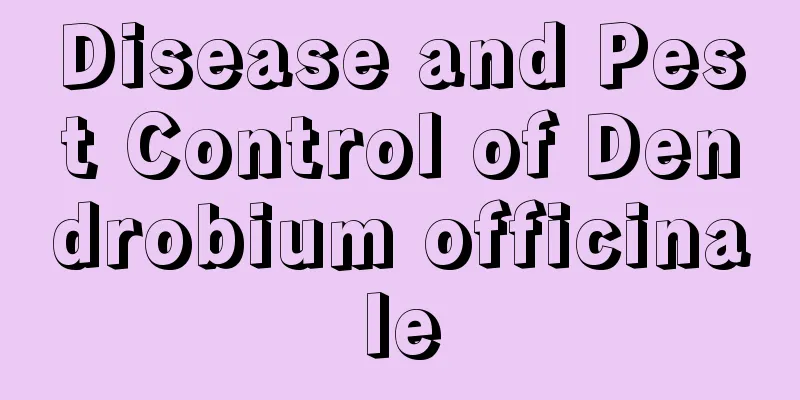Disease and Pest Control of Dendrobium officinale

1. Black spot diseaseWhen black spot disease first occurs, there will be dark brown spots on the leaves with yellow surroundings, and then they will slowly spread to the entire leaf, and finally the leaves will wither and fall off. March to May every year is the peak period of this disease. You can spray Bordeaux mixture or Multi-Spirit liquid to prevent the disease and control its development. 2. SnailSnails like to eat the leaves and stems of Dendrobium nigrofuranum, which is particularly harmful. They often eat the entire plant into a mess. Usually, you should pay attention to cleaning up dead branches and leaves to keep the place clean and hygienic. You can mix dichlorvos with bran and place it in places where snails often appear to poison and kill them. You can also directly spray dichlorvos and other pesticides or quicklime and salt water on the planting site. 3. AnthraxWind and rain can spread anthrax, and it usually invades through the wounds of Dendrobium nigrofusum, so the disease usually occurs when there is a lot of rain. In the early stage of the disease, small black round spots will grow on the stems and leaves of Dendrobium officinale. Gradually, pink sticky substances will appear on the small black spots, and finally the leaves will wither and fall off. Clean up fallen leaves and dead branches in time every winter to prevent pathogens from storing over the winter, and spray carbendazim or methyl thiophanate. 4. Soil pollutionMarch to May every year is also the outbreak period of sooty mold disease. As the name suggests, when this disease and pest occurs, all leaf surfaces will be covered with a layer of black powder like soot, affecting the photosynthesis of the leaves. Prevention and control measures: dilute carbendazim or malathion emulsion and spray. 5. Philippine shield scaleThe Philippine shield scale is a common parasite. It often hides on the back or edge of the leaves of Dendrobium black hair and sucks leaf juice, causing the leaves of Dendrobium black hair to wither and fall off. If it is not controlled well, it will cause the Dendrobium black hair to wither and die, and it will also cause sooty mold disease. When the Philippine shield scale grows into shells but there are not many of them, you can cut off the branches and leaves that have been infected by the disease and insects and burn them together or simply pinch them to death. Late May is the hatching period of this insect. When the number of pests is large, you can spray dimethoate emulsifiable concentrate or lime sulfur mixture. |
>>: Disease and Pest Control of Lespedeza
Recommend
What is wheat?
1. What is Wheat is one of the fine grains, the o...
How to quickly thicken bonsai branches (how to make the branches and trunks of potted plants thicker)
The trunks of many plants and flowers are too thi...
When is the flowering period of Akebia grandiflora
1. When is it Its flowering period is relatively ...
The difference between Zichi Bailian and Zichi Lianhua
1. Difference in appearance 1. Appearance of Zich...
A flower lover took only two months to grow a bare money tree into a lush and leafy one. How did he do it?
1. If the money tree doesn’t grow, it’s probably ...
When is the best time to water the green radish?
1. Watering time Pay attention to the time when w...
Seed propagation of black-eyed Susan
How to Propagate Black-Eyed Susan There are two w...
Cultivation methods and maintenance of old red lotus piles
How to grow red lotus into an old pile If we want...
Can poppies bloom in the same year?
Poppy Planting and Flowering Generally speaking, ...
Does cold weather slow down rooting of cuttings? Put an electric blanket on the flower bed and they will grow big white roots in 3 days!
Lay an electric blanket on the flower bed, and it...
How to propagate the succulent plant Raul by leaf cuttings, branch cuttings, and sowing
How to breed succulent Raul The succulent plant R...
How long does it take for Epiphyllum cuttings to take root?
Rooting time of Epiphyllum cuttings The habit of ...
Ginkgo seed sowing method (time, seedling raising method)
1. Sowing and seedling raising method 1. Seed sel...
How many years does it take for camellia seedlings to bloom? How to grow camellia seedlings
1. How many years does it take for a seedling to ...
What are the breeding methods and precautions for succulent Chihuahuas?
Chihuahua is a succulent variety that we are very...









